Inside India’s citizenship protests: Muslims fear becoming ‘refugees in their own country’
As the largest mass protest in more than forty years grips India, Adam Withnall speaks to the activists, women and children caught up in the country’s citizenship crisis and fighting to save their nation


India is currently in the grip of its largest mass protest since Indira Gandhi declared her infamous “Emergency” to quell nationwide unrest in the 1970s. Across the country, hundreds of rallies, candlelit marches and sit-ins have taken place since the government of Narendra Modi passed a bill which offers a path to citizenship for migrants of certain religions but excludes Muslims.
Defenders of the bill say it is necessary to protect those who have fled to India after suffering religious persecution in neighbouring Muslim-majority states like Bangladesh and Pakistan. But for its critics, the Citizenship Amendment Act (CAA) is a major step towards the final goal of Modi’s nationalist BJP party – to turn secularist India into a Hindu nation.
From the withdrawal of Kashmir’s autonomy to his promise to build a huge temple to the Hindu deity Lord Ram on the site of the destroyed Babri Masjid mosque, Modi has pushed ahead with policies that appeal to his middle-class, Hindu nationalist base since his landslide second election win last year. Yet with Kashmir, the destruction of Babri Masjid, and even to a large degree the imposition of a register of citizens in Assam, the reaction from the left and minority communities was muted.
Since the CAA was passed into law on 13 December, however, something has shifted. Police incursions on university campuses and deaths in violent clashes have led to comparisons, if not to Indira Gandhi’s India of the past, then certainly to the scenes of Hong Kong’s present. And while dozens of protesters, activists and minority community leaders that have spoken to The Independent have described CAA as a tipping point, the bungling police response to protests and draconian use of colonial-era curfew laws have undoubtedly fanned the flames of outrage.
To find out what is motivating the movement, The Independent heard from the activists, women and children who are leading – or being caught up in – India’s citizenship crisis.
The activist
Deepak Kabir is a well known figure in Lucknow, the capital of Uttar Pradesh. A softly spoken theatre director and organiser of an annual festival of Sufi music, with his easy charm, long hair and trademark denim cap, he is every inch the cultural activist. Yet on 20 December, a week after the CAA was passed into law, Kabir says he was branded the “mastermind” of violent protests in the city, hauled into the back room of a police station and beaten, brutally and repeatedly, by more than a dozen uniformed officers.
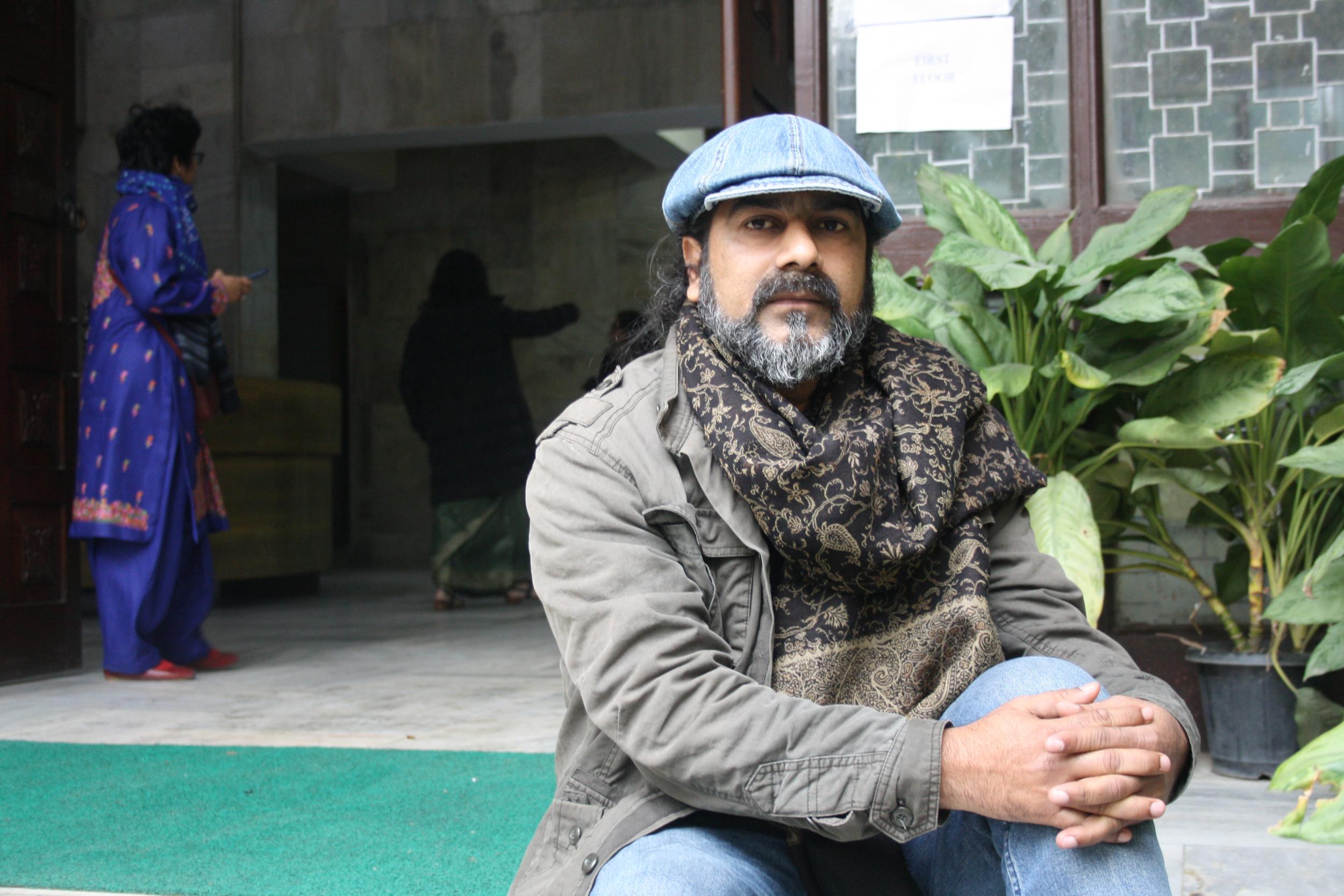
Speaking to The Independent, he explains that a simple quirk of timing could be the reason that the anti-CAA protest movement exploded more violently in Uttar Pradesh than anywhere else in India.
“The 19 December is a very important date for us in this state, particularly in Lucknow,” he says, because it marks the anniversary of the 1927 execution of three revolutionaries in the city by the occupying British forces. It is known locally as Martyrs’ Day. The day before, the authorities attempted to prevent a rally planned to mark the day by invoking Section 144, ironically a colonial-era law that is still used to ban gatherings of more than four people when breaches of law and order are feared.
“It was too late,” says Kabir. Protesters arrived in the centre of the city by the busload. “We thought we would get maybe 2,000, 3,000 people turning out, but that day 500,000 to 600,000 came. Young and old, Hindu and Muslim, men, women and children.”
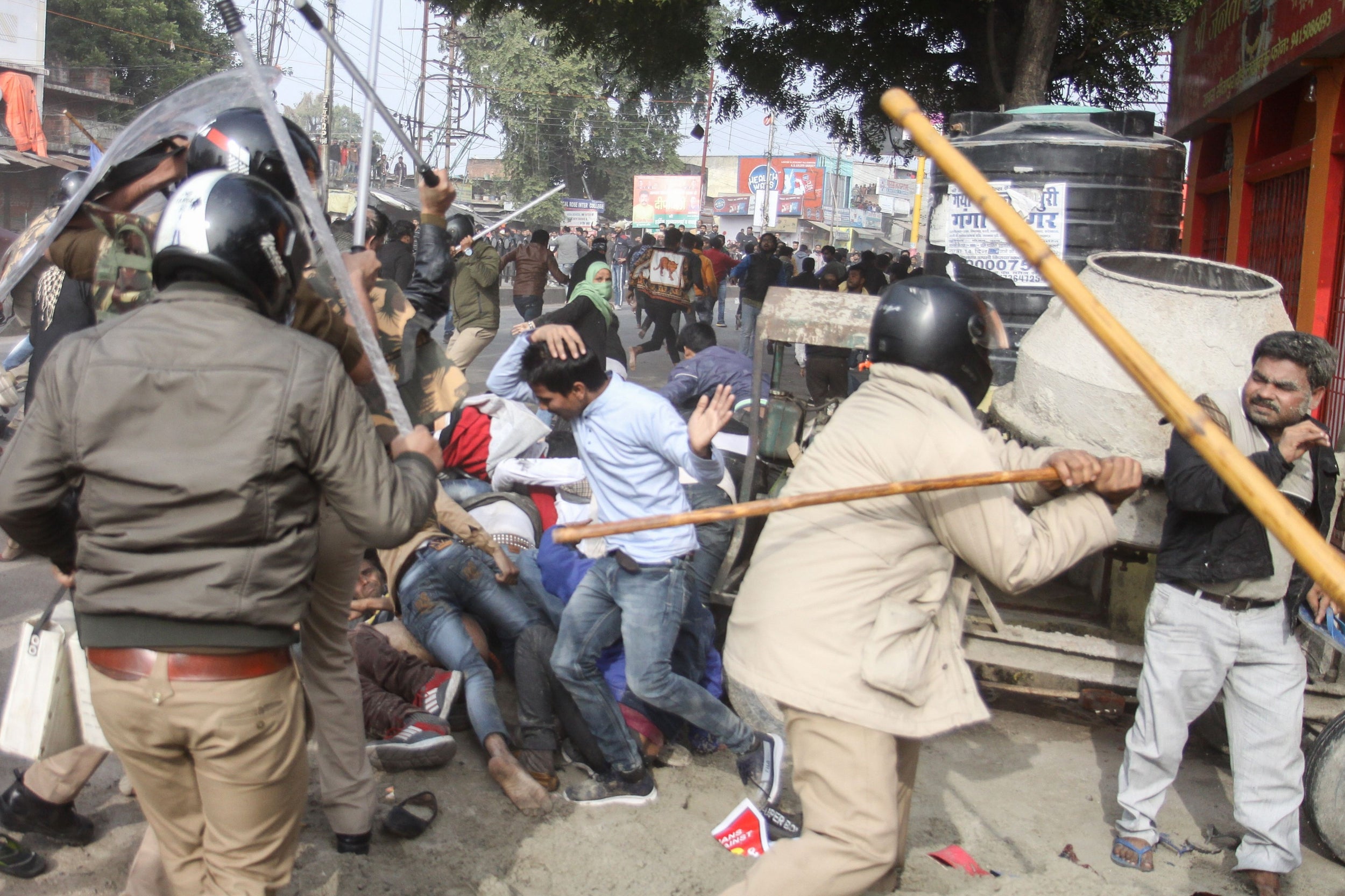
There is no way to verify Kabir’s claim on numbers, but police later confirmed that 1,113 people had been arrested on suspicion of involvement in violent protests across the state, giving some indication of the sheer scale of unrest. Uttar Pradesh has seen the worst of the clashes in the anti-CAA movement so far, with at least 23 people killed across the state in the month after the law was passed.
People, everyone, not just Muslims, have lost faith in the authorities in Uttar Pradesh ... People are going to keep gathering to protest, every day ... We the people are against CAA – there is absolutely no space for discrimination in our constitution
For the most part, the 19 December protest carried on peacefully. Kabir says that with an internet shutdown making coordination difficult, he addressed a couple of scattered gatherings before he and his wife returned home. The violent clashes with police, in which at least one Muslim protester was shot dead, happened later and elsewhere.
Late that night, a journalist told Kabir that two of his friends – missing since the afternoon – had been swept up in the detentions. In the morning, he went to Hazratganj police station to try and find them. Both his friends were there. Kabir says he asked to speak to a senior officer “to appeal for their release” and started making phone calls to tell their family their whereabouts, when a constable grabbed his arm.
“At first I thought it was a misunderstanding. The SHO (station house officer, the inspector in charge of a police station in India) arrived, and again I thought that I could convince him that this was all a mistake.”
Instead, Kabir says, the senior officer smashed his phone on the floor. He said he had seen a video of Kabir speaking at another protest gathering on 16 December. “He tried to claim I was the mastermind of all this.
“The SHO called over a dozen, 15 constables and they took me to a room, held my arms down and then started beating me. They beat me, brutally, all over, for 15 minutes.”
After that first beating, two officers took Kabir to hospital for what he called a “formality” of a medical assessment. Then they brought him back to the station, where a higher-ranking, district-wide inspector of police (ISP) had arrived. “He [the more senior officer] started insulting everyone I know. He held up my long hair and said it showed I was a communist, an urban naxal. Then he told the SHO it was time for round two.”
Gandhi was a good man, and he got us freedom from British rule. But today we have to fight for freedom from our own people, from those we chose as our own representatives
Kabir says that at this point they started to remove his trousers. “I begged them, beat me, do whatever you want to me, but don’t do that.”
The ISP told the constables to “beat him until the bruises are two inches thick… until he can’t sit for three months”, Kabir says. The beating resumed, at first with two constables holding him up by the arms, and then for a while on the floor. “I tried to stay calm, to keep my eyes and mouth shut,” says Kabir. “I didn’t beg.”
From the station, Kabir was taken to jail. He was landed with 20 charges, including serious offences like attempted murder, destruction of property, an explosive charge and a Section 120B charge – “criminal conspiracy” – in other words, that he was one of the organisers of the violent protests. After 21 days, he was released on bail.
Kabir is remarkably relaxed about the charges, confident that without “a shred of evidence” they will be thrown out by the courts. But they will still hang over him for years, thanks to India’s infamous ponderously slow judicial system. He sees the latest protests as a turning point against the Modi administration because, while previous moves like the abrogation of Kashmir’s autonomy or the ruling on Babri Masjid were seen as impacting Muslims only, “CAA is a dent on the basic idea of India”.
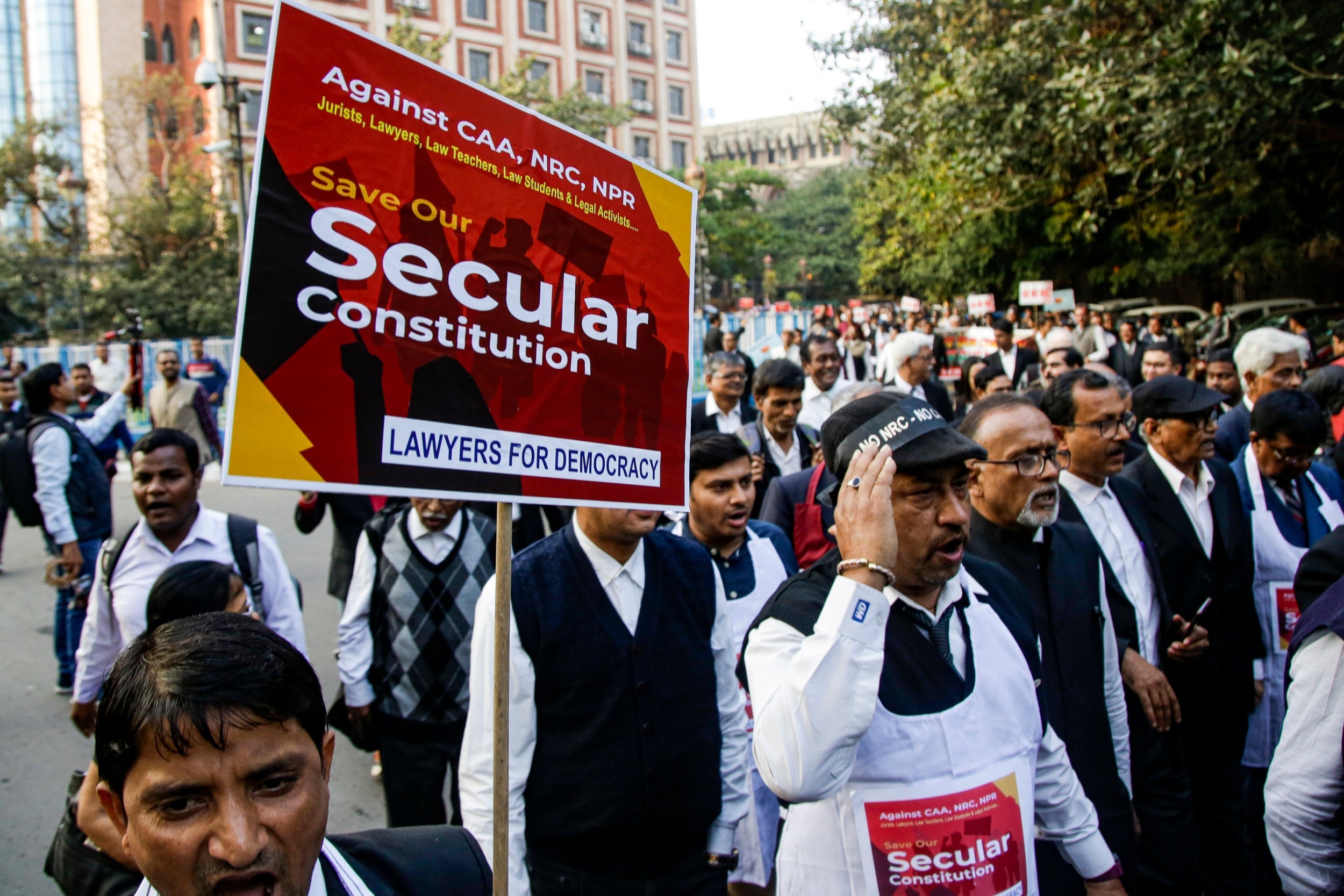
“People, everyone, not just Muslims, have lost faith in the authorities in Uttar Pradesh. In a way it was a good thing that I was arrested; I am a social activist with a Hindu name, I am popular, well known [here], no one could believe that I am a rioter. I believe that the protests will continue. People are going to keep gathering to protest, every day, and even when we are not out on the road, we are campaigning online. We the people are against CAA – there is absolutely no space for discrimination in our constitution.”
The women
There is something akin to a festival atmosphere to the sit-in protest, or dharna, at Shaheen Bagh, a working-class neighbourhood of south Delhi, that has come to symbolise the nationwide anti-CAA movement as a whole. Led by a dedicated core of around 500 mostly Muslim women, thousands have occupied a 1km stretch of a three-lane highway for 50 days and say they will not leave until the government repeals or agrees to amend the citizenship law.
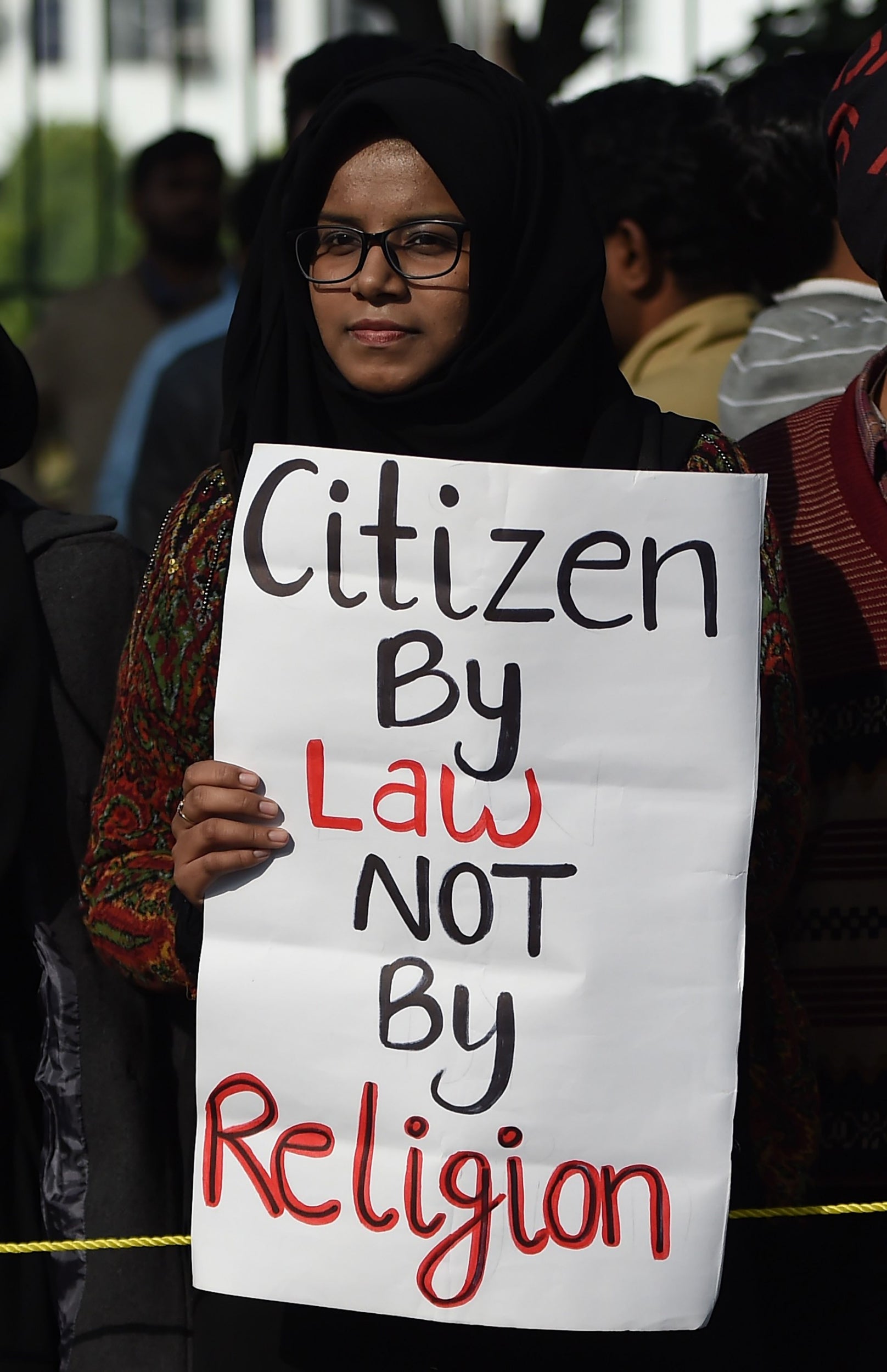
Several levels of barricades keep the protest away from a minimal police presence, while volunteers from the movement provide security checks at the perimeter. Street vendors sell snacks and drinks at the entrance, and in the evening large crowds throng the narrow winding streets leading to the focal point – a makeshift stage.
There was a noticeable spike in attendees last Thursday as Shaheen Bagh joined the nation in remembering the anniversary of Mahatma Gandhi’s assassination, at 5.17pm on 30 January 1948. The father of the nation, whose non-violent protests won India its independence, is a huge inspiration to these women, and the rows of fasters were transformed by paper masks into a sea of Gandhis. On the stage, actors play out Gandhi’s assassination, complete with a maniacally laughing Nathuram Godse wielding a toy gun.
Mehrouni Shah, a woman in her fifties who reclines on a mattress, physically weakened by her 30-day hunger strike, says secularism in India would never have been allowed to get into such crisis if Gandhi were alive today.
“Gandhi was a good man, and he got us freedom from British rule. But today we have to fight for freedom from our own people, from those we chose as our own representatives.”

Spirits are high, even if there are signs of fatigue. Shah jokes dryly that she is “happy for the fact that at least we are allowed to sit, Modi-ji has let us do that”.
Many of the women here are mothers, grandmothers, and there are plenty of children milling around the tarpaulin-covered protest area, the oversized Gandhi masks slipping occasionally from their faces. Later they will be entertained by a children’s play, again featuring a child dressed up as Gandhi in the starring role, and traditional musical performances.
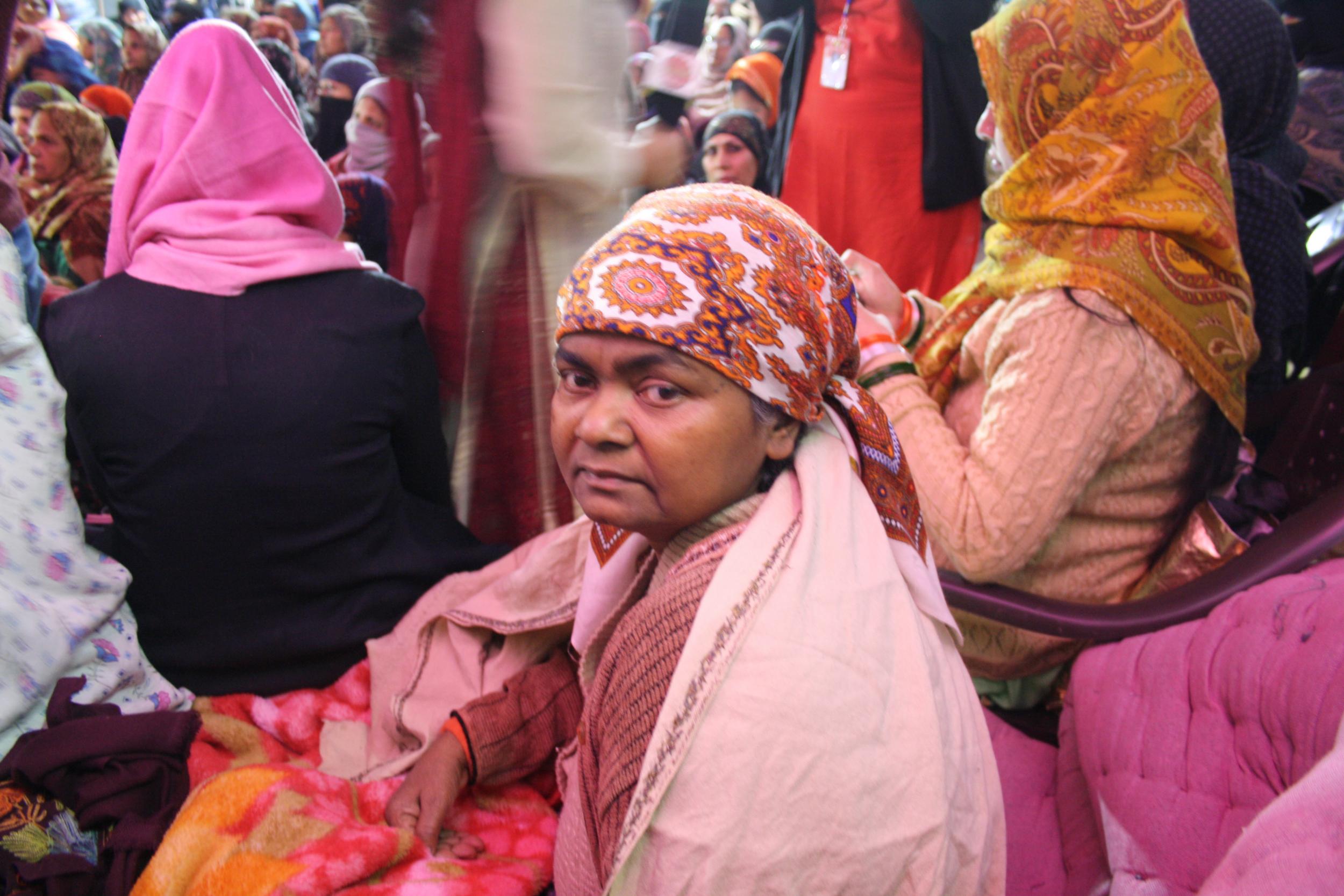
Shah says she is protesting because of “the black laws that have been passed and the ones that are coming” – voicing a common sentiment that there are more measures to come before the BJP’s vision of an India for Hindus is realised. “They will take away the future from our children, they’ll take away their education and their citizenship rights. We sit here because we don’t want our children tomorrow to be refugees in their own country, and we won’t give up this fight.”
Some have been inspired to come out and protest for the first time in their lives, and have never experienced any kind of hunger strike, never mind one lasting 50 days. Most fast for 12 to 14 hours each day, eating one meal in the evening before bed. Shaheen, 47, holds back tears as she tells The Independent that she had been inspired to join her first demonstration by the police crackdown on protesters at Jamia Millia Islamia university (JMI) on 15 December, when officers broke up a student rally with teargas and baton charges.

“There have been protests in the past but never before have I seen this kind of brutality. It is not only the lathi (baton) charge, the police have shot people, they have dragged girls by the hair, they have gone into the library and beat the hell out of children, women and girls.
“Our children are well educated, they saw this coming, and what the establishment is doing is not in our best interests, so they came out to protest. But they were beaten up, right? So we are standing here in solidarity with them. They are our future. They want to create our future. They stood up for us and now we stand by them.”
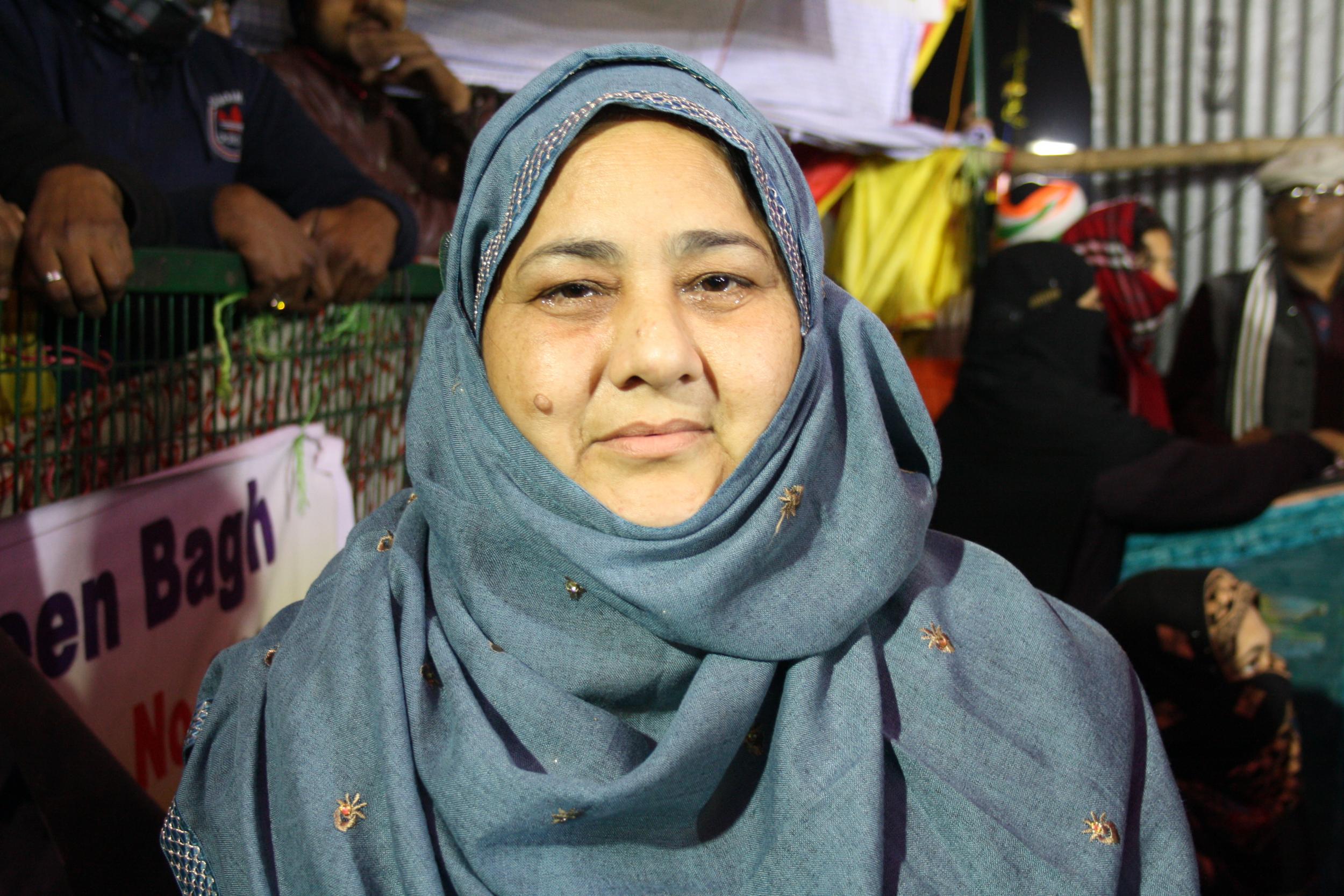
One of the three or four women who started the Shaheen Bagh protest is Shifana Ajmal, 37, an academic at JMI. She says she was among those beaten when police entered the campus in December. “After they came inside the library, we hid from the police in the mosque. But they came into the mosque as well and they started beating us. They were shouting, abusing us, and they beat us very brutally. I was injured, my legs were injured by a police officer hitting me with a baton.
“That was the first step towards this protest, we said we would not tolerate it anymore. Four of us came here to start it and afterwards many ladies came and joined us until it became the huge crowd you see here now.”
Ajmal says Muslims are derided in the media as being “a very intolerant people. But we tolerated everything, until it came to the CAA and they showed their true face. [The law] provokes all of India, not only Muslims. We are just the few who took the initiative to start the protest against it.”
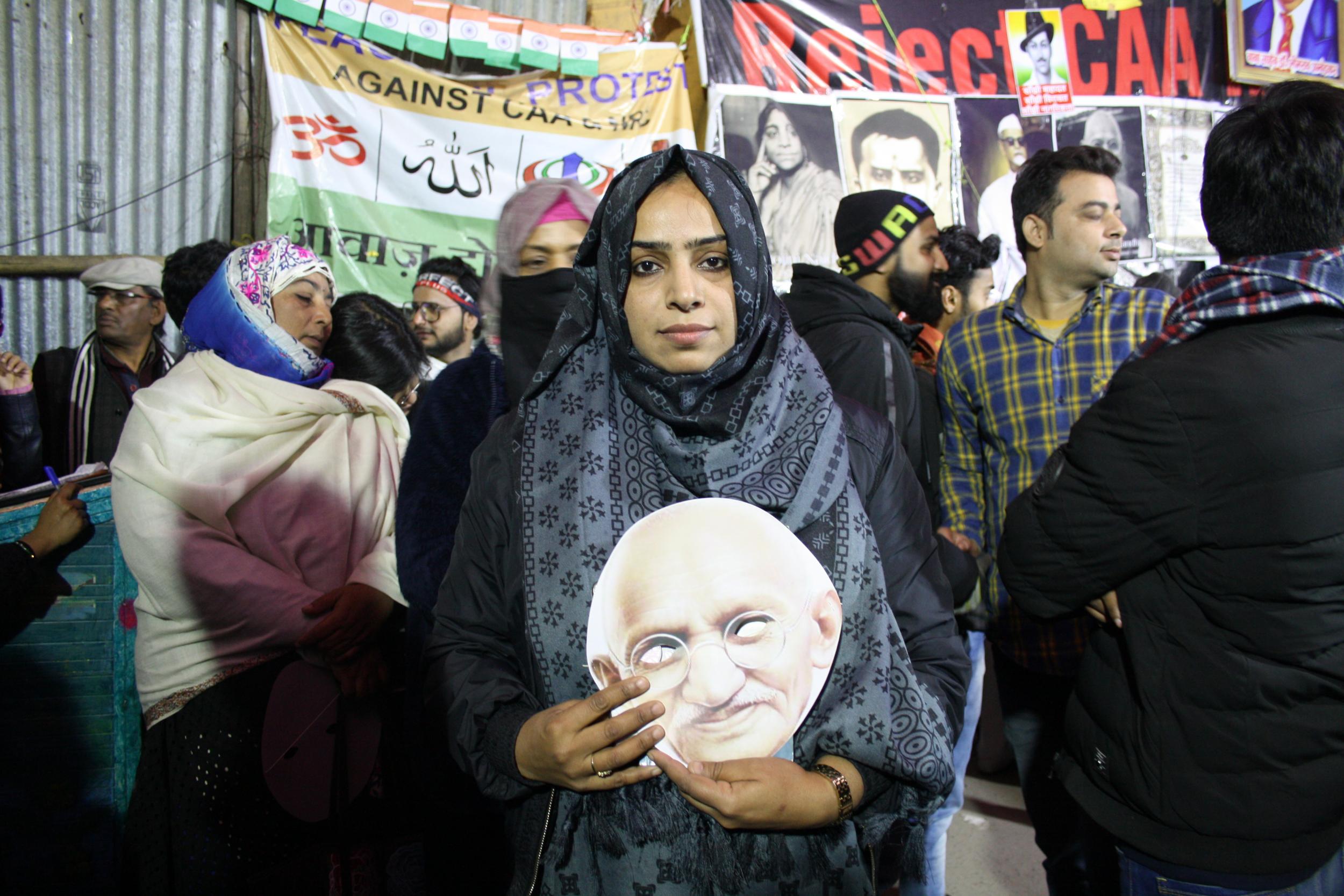
The children
The most infamous single incident since the passing of the CAA came in the Muzaffarnagar district of Uttar Pradesh, where hundreds of Muslim men and boys were rounded up on 20 December and placed in police detention. There have been numerous media accounts of widespread torture of the detainees, something which the activist Kabir said would not have happened were it not for comments made a day earlier by the chief minister of Uttar Pradesh, Yogi Adityanath, a militant Hindu monk and darling of the BJP far right.
They will take away the future from our children, they’ll take away their education and their citizenship rights. We sit here because we don’t want our children tomorrow to be refugees in their own country, and we won’t give up this fight
Speaking after anti-CAA protesters were accused of damaging public property, Yogi (as he is universally known) told reporters: “They have been captured in video and CCTV footage. We will take badla (revenge) on them.”
In testimony recorded by the NGO Karwan e Mohabbat, a 14-year-old boy named Salim from Mahmoodnagar in Muzaffarnagar recounted how he was arrested at 3pm after returning home from Friday prayers, and held for four days without charge. He said there were chaotic scenes in his neighbourhood, and his brother had gone missing.
“I went out to find him, and at that moment police vehicles came from all directions. They caught me as soon as they saw me, and beat me with sticks. They beat me very badly.”
Salim says he told police he was a minor, that they should call his parents, but they ignored him and swore at him. That’s when they pulled a burning metal rod out of a fire on the street. He shows a burn wound on his hand.
“They placed the rod on my hand, in the street. They were about to throw me on the fire, they started beating me and tried to throw me in the fire. It was two policemen who saved me, they said: ‘Don’t throw him on the fire, put him in the car.’”
Salim says he wept as he was taken away to a police lockup. He hoped that, once processed, he would be able to call his parents. Instead, he says, the abuse continued in detention. “They beat me many times, once for an hour and a half. They said I had to give them 100 names, they asked who else I was with. [But] I told them I didn’t even know anyone else there.”
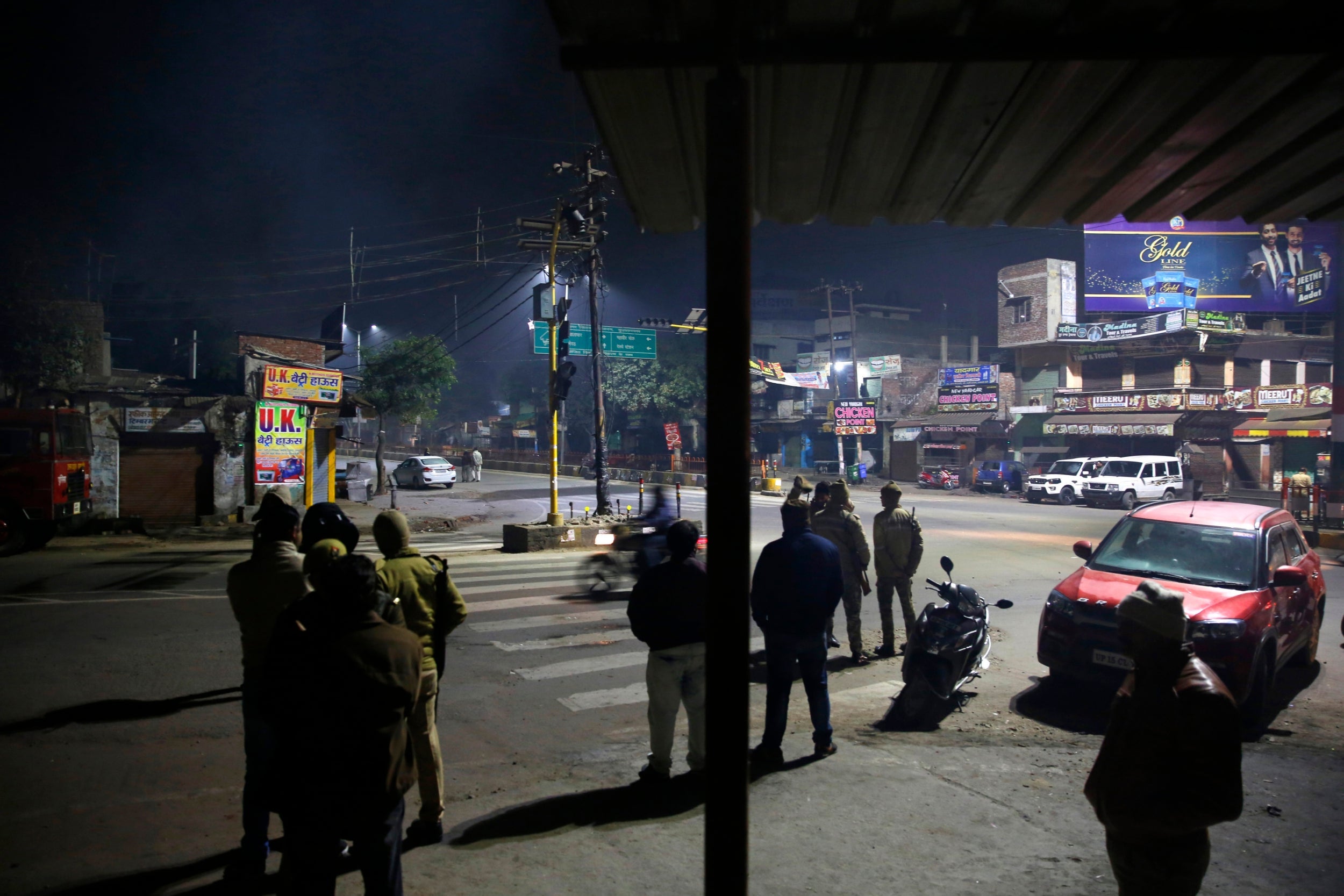
Along with the torture, there was verbal abuse that, Salim says, made clear the Islamophobic nature of the police crackdown. “As they beat us they made us chant slogans, they made us chant ‘Jai Shri Ram’ (Glory to Lord Ram, the Hindu deity). They kept abusing us. They said, ‘Will your Allah come to save you? Let us see.’”
Salim’s testimony was used at last month’s People’s Tribunal on State Action in UP, a day’s hearing organised by activists to investigate allegations of police brutality in the state during the anti-CAA protests. A witness in Varanasi, the home constituency of the prime minister, described an incident in which he said a police baton charge led to the death of an eight-year-old boy. It took place, again on 20 December, after protesters against the CAA had gathered in the district of Bajardiha.
This is against international laws and police guidelines, both international and domestic, because the only time police are supposed to use force is when it is the very last option. In Bajardiha we saw that it was their second option
“Police lathi charged, aiming their sticks at the head and upper body, as well as using stones to pelt protesters,” the witness said. “This is against international laws and police guidelines, both international and domestic, because the only time police are supposed to use force is when it is the very last option. In Bajardiha we saw that it was their second option, they just told us to stop protesting and when we didn’t they started brutally charging.
“The lanes are very narrow, people started panicking and tried to flee to a maidan (square) where children were playing. The stampede led to the death” of eight-year-old Mohammad Sageer, who was out playing near his home on his bicycle.
Suroor Mander, one of the organisers from the Karwan e Mohabbat NGO, told the jury that “it is the first responsibility of the police to identify the children in a group and ensure they are protected”.
Yet, she said, in all testimonies provided from Uttar Pradesh there was “not one incidence” where a minor caught up in the detentions was either processed by the state’s specialist juvenile police unit or handed over to non-police child services. “In every case children were kept with adults, inside police stations and in some cases for more than 24 hours. Most were released without official charges, and families stated that police actively hid the whereabouts of children from their parents.
“But what is most chilling in these stories is the extreme police brutality towards these children. In town after town we found that children were verbally, physically and sexually abused by police personnel, at the time of being detained and thereafter.”
Members of the jury at the people’s tribunal included two former Supreme Court justices, as well as academics, charity bosses and former civil servants. In a joint statement after hearing seven hours of testimony, the panel said they were “convinced that the entire state machinery, led from the top, acted with grave prejudice and perpetrated violence targeting one particular community, the state’s Muslim population and the social activists leading the movement”.
In their conclusion, they said the police response to the protests “shows a complete collapse of rule of law” in Uttar Pradesh. “The state administration charged with protecting the rule of law is perpetrating violence upon its own people,” it said.
Professor Irfan Habib, a historian and prominent defender of secularism, said he and other members of the jury had been “greatly moved by the evidence provided”. What was happening in the wake of the CAA “makes a mockery of our constitution”, he said. “It is reminiscent not of the British rule, but of Nazi Germany. This fight is not about Uttar Pradesh, it is a fight for the nation.”
Speaking on 6 February in India's parliament, Mr Modi defended the CAA at length, insisting that "there will be no impact on any citizen of India, whatever be their faith or religion, owing to the implementation of the CAA". He accused opposition parties who raised concerns over the new measures of "furthering Pakistan’s agenda of divisiveness in India". And he referred to the protesters as a "tukde tukde" gang, a phrase often used by the right to deride critics as wanting to break up India - tukde is Hindi for "pieces".
The Uttar Pradesh police did not respond to requests for comment.
Join our commenting forum
Join thought-provoking conversations, follow other Independent readers and see their replies
Comments
Bookmark popover
Removed from bookmarks